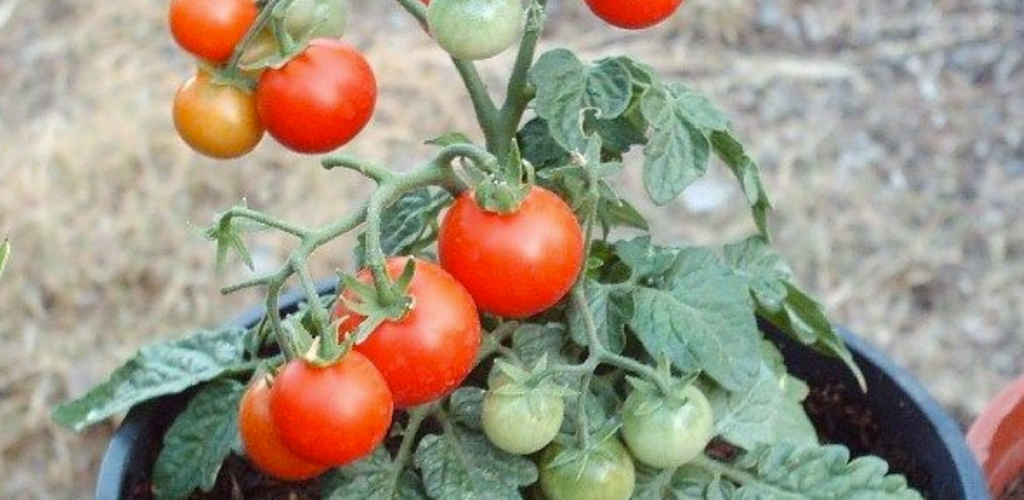13 tips for growing tomatoes successfully”
If you are lucky enough to have a vegetable garden or a small free space to grow beautiful things, tomatoes are probably one of the most appreciated and pampered crops by the whole family . In fact, there are few who disdain this fresh food that can be used in many ways, whether raw or cooked. But to enjoy variety, the gardener must make sure to grow tomatoes in optimal conditions. If you want to grow large, tasty tomatoes in greater quantities, here are some tips that will make the difference and provide you with keys to success in their cultivation.
For better growth of seedlings and tomatoes that thrive both in soil and in pots, rediscover our ideas for the most effective, economical and natural tomato fertilizers. Seeds of the different tomato varieties appreciate these small additions to the substrate .

- To make the roots more robust, plant the tomato plants deeper. By being deeper in the soil, the stem will create more roots that in turn will be able to absorb all the water that the tomatoes need to grow. By being better rooted in the soil, the plants will also be more resistant to inclement weather.
- Cut off the lower leaves. Growth occurs mainly at the top of the tomato plants, where the sun shines most, thus promoting photosynthesis. Once the plant reaches 60 cm, do not hesitate to prune the lower half with pruning shears to remove the leaves. Some diseases originate in the soil and spread through the leaves; by cutting them off, you will also protect your plants.
- Remove the suckers . This is the peculiar name given to those small branches that appear between the central stem and the main stem and that you must pinch to remove. As they do not produce fruit, they are useless and deprive your tomatoes a little of light. It is not mandatory, but it is the small details that guarantee tasty fruits. Do this on plants of at least 80 cm and take cuttings to produce more tomatoes.
- Opt for mulching when growing tomatoes . This protects the soil, maintains moisture, warms the soil and protects your plants from some diseases, as they will be less in direct contact with the soil. The root system will be healthier.
- Copper will keep some pesticides away . Slugs and snails are a threat to your tomatoes. To avoid problems, use copper bands or pipes to prevent invasions. It is always better than chemicals and is effective.
- Use a stake for your tomatoes . The stake will prevent them from falling or leaning by supporting them and protecting them from the damaging effects of the wind. Properly oriented vertically, the stem will suffer less and will better fulfill its function of transporting sap and nutrients efficiently.
- Provide space. There should be between 60 and 90 cm between each plant . If they are too close together, your plants will receive less sunlight, especially at the bottom, and photosynthesis will not be as effective. Think about this if you want to have large fruits for stuffed tomatoes or for cherry tomatoes!
- To prevent tomatoes from cracking, water your plants sufficiently.
- Against yellowing leaves and for healthy plants, you can turn to Epsom salt. It is a well-known trick for gardeners who consider it essential for good growth, robust stems, prolonging the growing season and preventing yellowing. You can add it to the soil at planting time using a soil stirring tool. One tablespoon will be enough in your hole. You can add one teaspoon per three liters of water for your irrigation every two to three weeks. This will provide them with magnesium and sulphate.
- Take care of watering to grow and harvest juicy tomatoes Don’t water tomatoes just any old way! Water from the bottom up to avoid splashes that spread disease. Prefer slower watering; don’t let tomatoes get a sudden shower of water. By doing it more slowly and gently so that the penetration is deep, the water will be able to penetrate the soil well and reach all the roots. The soil will stay moister this way and the plant will have less risk of drying out. Then, check the watering by digging. There should be a minimum of 15 cm of moist soil (more is perfect). If the soil lacks moisture, continue. After a week, you will have an idea of how often and how much water is needed.
- Accompany your plants with some marigold or Indian carnation plants . It’s not just a question of colour! This prevents nematodes from attacking tomatoes and thus deforming stems, roots and fruits. Often, because of them, nutrients circulate poorly or some diseases are transmitted. Place them near the base of your tomato plants so that their scent and foliage will scare away these undesirables.
- Try garlic to improve the flavor of your tomatoes . Plant garlic bulbs near your tomato plants. They will taste better and this will reduce the amount of parasitic fungi. If you don’t like the idea, you can use garlic in another way: crush a few cloves of garlic and add 3 liters of water to water the soil.
- Move them around occasionally . Don’t plant your tomatoes in the same spot for 3 years in a row (three years in the same area is the maximum). If space in your garden allows, move them around after two years. Over time, the soil can become less fertile and your plants will produce fewer tomatoes.
